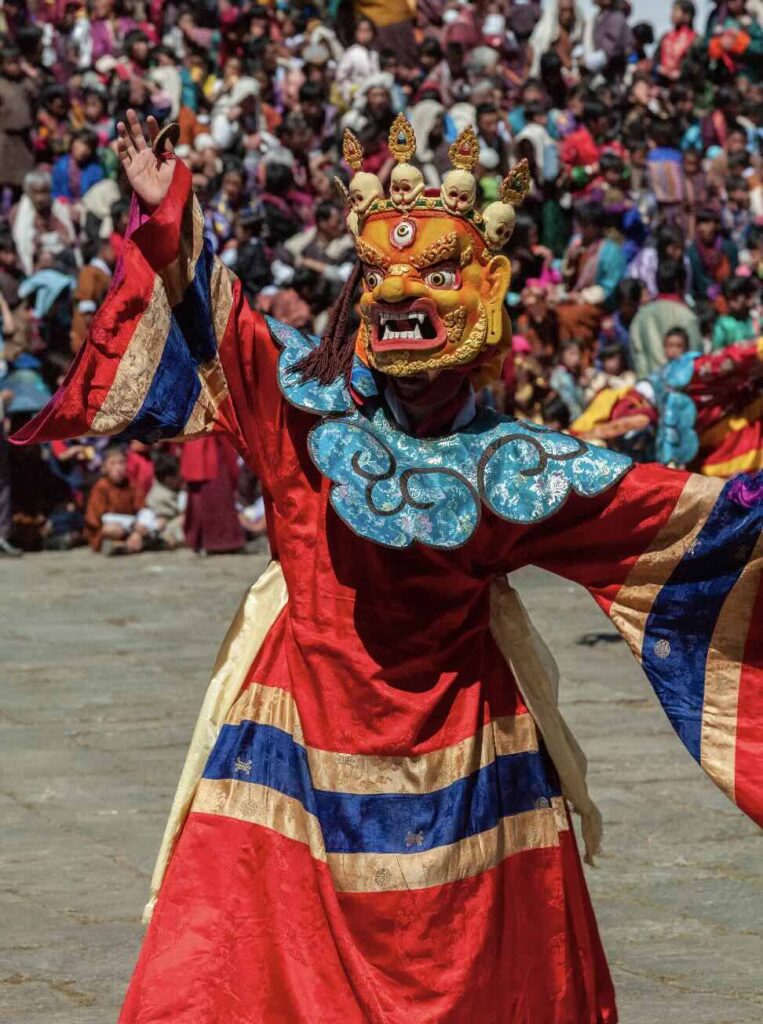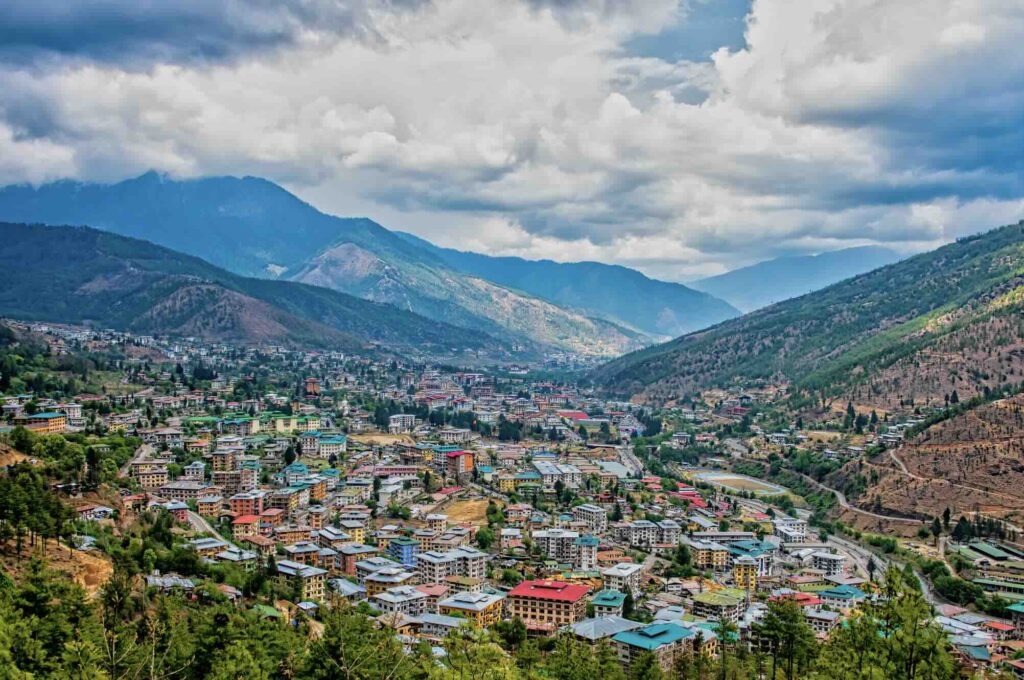In the eastern Himalayas, Bhutan captivates numerous souls with its verdant terrains, deep-rooted cultural traditions, and distinct persona. Bhutan is a mysterious country in the heart of the Himalayan mountains.
Central to deciphering Bhutan’s essence are its currency, the Bhutan Ngultrum (BTN), and its official language, Dzongkha. These elements reflect the nation’s economic stance and the vibrant tapestry of languages it cherishes. Read on as we explore more about the Bhutanese language and currency and a few things about the country Bhutan.
Table of Contents
- Bhutan: The Land Of The Thunder Dragon, Its Currency, And The Tapestry Of Languages
- 12 Fascinating Facts About The Kingdom Of Bhutan
- Related Questions
Bhutan: The Land Of The Thunder Dragon, Its Currency, And The Tapestry Of Languages
In the eastern Himalayas, Bhutan is a nation that mystifies many with its lush landscapes, profound cultural practices, and unique identity.
Two pillars at the heart of understanding Bhutan are its currency – the Bhutan Ngultrum (BTN) – and its language, Dzongkha. These aspects mirror the country’s economic condition and the rich linguistic diversity it preserves.
Understanding The Currency Of Bhutan: The Bhutan Ngultrum (BTN)
The currency of Bhutan is known as Ngultrum or Nu. Read on as we explore more about this currency central to the Bhutanese economy.

- Basics: The Bhutan Ngultrum, symbolized as Nu, is the official currency of Bhutan. It’s segmented into 100 smaller units called chhertum.
- Link To The Indian Economy: A significant feature of the Ngultrum is its parity with the Indian Rupee. It can be exchanged only with the Indian Rupee due to the historically close ties between the two nations.
- Economic Snapshot: Despite its scenic beauty and inherent serenity, Bhutan’s economy remains small and leans heavily on support from India. With an emphasis on tourism, wood products, processed foods, fruits, and cement, the country is progressing toward growth. The hydroelectric power sector is a shining beacon of potential, facilitating electricity exports to India.
- A Dive Into The Past: The currency’s history traces back to 1974 when the Ngultrum was introduced, initially in denominations of 1, 5, and 10 Ngultrum. Various denominations were further introduced as the country began economic development in the 1960s.
A significant leap was in 1985 when Bhutan began printing its banknotes. The most recent series, issued in 2006, saw banknotes ranging from 1 to 1,000 Ngultrum, showcasing the evolution and stabilization of the Bhutanese economy.
The Linguistic Soul Of Bhutan: Dzongkha And Beyond
The language of Bhutan is central to the Bhutanese culture. But it is not the only language spoken in Bhutan.

- Dzongkha – The National Language: This language, which goes by the name Bhutanese for many, is part of the broader Tibetan language family, consisting of 53 languages. The script, Chhokey, parallels classical Tibetan, reflecting Bhutan’s deep-seated Buddhist roots.
- Education and Dzongkha: Even though English reigns as the instructional medium in Bhutan’s education system, Dzongkha holds a pivotal place. It’s taught as the national language, ensuring every Bhutanese remains connected to their linguistic roots.
- A Mosaic of Languages: Bhutan is not just about Dzongkha. The nation is a linguistic kaleidoscope, with nearly 20 languages spoken across its length and breadth. Such diversity in a compact nation is a testament to Bhutan’s rich cultural and regional variations.
Bhutan, often cloaked in mystery and allure, is a land where the modern intersects with the ancient. Its currency, the Bhutan Ngultrum, stands as a symbol of its growing economic aspirations, while the diverse languages, led by Dzongkha, narrate stories of its past and cultural richness.
Understanding these facets of Bhutan offers a deeper, more nuanced perspective of this Himalayan Shangri-La.
12 Fascinating Facts About The Kingdom Of Bhutan
Bhutan is a fascinating and beautiful country nestled in the Himalayan mountains. Here are 12 of the most interesting facts about Bhutan:
Land Of The Thunder Dragon:
Bhutan is often affectionately called ‘Druk Yul’ in its native language, which translates to ‘Land of the Thunder Dragon.’ This name originates from the fierce storms that frequently roar in from the Himalayas.

Gross National Happiness:
Instead of the conventional Gross Domestic Product (GDP), Bhutan evaluates its progress through the unique Gross National Happiness (GNH) metric. This holistic approach considers its citizens’ spiritual, physical, social, and environmental well-being.
Carbon Negative Status:
Remarkably, Bhutan stands as the world’s only carbon-negative nation. It absorbs more carbon dioxide than it emits, mainly because of its dense forests that cover over 70% of its land.
Traditional Attire:
Bhutan has a distinctive national dress code. Men don the ‘gho,’ a knee-length robe tied at the waist, while women wear the ‘kira,’ an ankle-length dress accompanied by a jacket called ‘togo.’
A Capital Without Traffic Lights:
Thimphu, the capital of Bhutan, boasts a unique distinction: it lacks traffic lights. Instead, white-gloved traffic police direct the flow of vehicles at intersections.
Tobacco Prohibition:
Bhutan was the first country globally to ban the sale and production of tobacco, showcasing its commitment to the well-being of its people.
Last Himalayan Kingdom:
While the world has modernized rapidly, Bhutan remains one of the last strongholds of Vajrayana Buddhism and has retained its status as the last great Himalayan Kingdom.
Festive Celebrations:
Bhutan is renowned for its vibrant festivals, especially the ‘Tsechu’ celebrations, which combine religious ceremonies with lively dances, costumes, and communal participation.

National Sport:
Archery isn’t just a pastime in Bhutan—it’s the national sport. Tournaments are colorful, competitive, and often paired with local festivities.
Preservation Of Biodiversity:
Bhutan must ensure that at least 60% of its land remains forested by law. This commitment has made it a biodiversity hotspot, hosting numerous endangered species.
Stamps For Collectors:
Bhutan is known for its innovative approach to stamps, which have become sought-after collector’s items. Some of the nation’s stamps are even playable phonograph records!
Intriguing Mountains:
Bhutan is home to some unclimbed mountains, including Gangkhar Puensum, often cited as the world’s highest unclimbed peak. Due to religious beliefs, mountaineering is prohibited at any peak above 6,000 meters.

With its rich tapestry of culture, spirituality, and nature, Bhutan offers a refreshing glimpse into a world where tradition and modernity harmoniously coexist. This tiny Himalayan kingdom certainly holds many wonders beyond these 12 facts, awaiting discovery by those intrigued by its mystique.
At A Bus On A Dusty Road, we talk about everything about travel, life, and ex-pat living. We are all about “Living Life As A Global Citizen.” We explore social, cultural, and economic issues and travel.
We would love to have you be part of our community. Sign up for our newsletter to keep up-to-date by clicking here. If you have any questions, you can contact me, Anita, by clicking here.
Listen to our Podcast called Dusty Roads. You can find it on all major podcast platforms. Try out to listen to one of our podcasts by clicking here.
Subscribe to our A Bus On A Dusty Road YouTube Channel filled with great videos and information by clicking here.
Related Questions
What Is The Official Language Of Hong Kong?
The official language of Hong Kong is Chinese and English. The residents of Hong Kong are native Cantonese Chinese speakers, so the official language is Cantonese Chinese. Many in Hong Kong can also speak Mandarin Chinese; many local Hong Kong residents prefer to speak Cantonese Chinese or English.
By clicking here, you can discover What Is The Official Language Of Hong Kong?
How Closely Related Are The Thai And Vietnamese Languages?
Thai and Vietnamese are both Asian-based languages, but despite being Asian-based, they are from different language family groups. Both Thai and Vietnamese are tonal languages and are analytic languages.
By clicking here, you can discover How Closely Related Are The Thai And Vietnamese Languages?
The Philippines And The Tagalog Language
Today, the Philippines has two official languages – English and Tagalog, or sometimes it is called Filipino. Only about a quarter of the Filipino people are native Tagalog speakers; as an island nation, the Philippines has many different dialects and languages. However, Tagalog is a language widely spoken in the Philippines.
By clicking here, you can discover The Philippines And The Tagalog Language.


